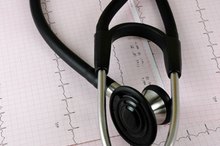What Is a Biometric Screening?
A biometric screening is a short health examination that determines the risk level of a person for certain diseases and medical conditions. Many employers and universities encourage staff or students to complete this type of health screening so they can start thinking about their health and pursue treatment if needed.
If you are experiencing serious medical symptoms, seek emergency treatment immediately.
Purpose
A biometric screening is a general health check that can identify any significant cardiovascular or nervous system problems. This health check provides several biometric measures including: cholesterol levels for full lipid panel and glucose; blood pressure; blood glucose levels and also includes a measurement of height, weight and body mass index (BMI). Results are typically available within a few days after the screening, and are kept confidential.
Significance
What Is a CBC With Auto Diff Blood Test?
Learn More
The biometric screening can be one of several components of a complete health and wellness check. Most doctors and clinics perform a biometric screening as part of a wellness program that includes the completion of a health risk assessment (HRA) questionnaire, and a consultation. Results of the biometric screening can help to identify various diseases or health problems, and allow the patient to work with their physician to lower their health risks for certain conditions.
Components
The typical biometric screening test can take up to 15 minutes, and is performed at a physician's clinic, or on site at an employment facility or college campus. It can consist of all or some of the following screening tests: carotid artery ultrasound screening; blood pressure check; blood draw; diabetes screening; and cholesterol screening.
Types
Naughton Treadmill Protocol
Learn More
The blood pressure screening is completed with a standard blood pressure check. The blood test is conducted by drawing a vial of blood; patients are required to fast for a short period of time before having blood drawn. The diabetes screening is performed by measuring glucose levels in the blood from the blood test.The cholesterol screening is performed with a "finger-stick" test that measures full lipid and glucose levels. The carotid artery ultrasound test determines the risk factor of having a stroke. This test measures how much plaque has accumulated in the arteries.
- The blood pressure screening is completed with a standard blood pressure check.
- The cholesterol screening is performed with a "finger-stick" test that measures full lipid and glucose levels.
Benefits
Biometric screenings allow the patient to learn about her current health status, and determine her risk for common diseases including diabetes, heart disease, asthma and other medical conditions. The physician or nurse conducting the tests can review the results of the screening with patients and follow up to do further tests, or recommend a treatment plan or wellness program based on immediate needs.
Related Articles
References
- U.S. Preventive Services Task Force. Recommendations for primary care practice.
- Dobrow MJ, Hagens V, Chafe R, et al. Consolidated principles for screening based on a systematic review and consensus process. CMAJ. 2018;190(14):E422-E429. doi:10.1503/cmaj.171154
- Stol YH, Asscher ECA, Schermer MHN. What is a good health check? An interview study of health check providers' views and practices. BMC Med Ethics. 2017;18(1):55. Published 2017 Oct 2. doi:10.1186/s12910-017-0213-x
- Harris R, et al. Reconsidering the Criteria for Evaluating Proposed Screening Programs: Reflections From 4 Current and Former Members of the U.S. Preventive Services Task Force. Epidemiol Rev. 2011;33(1):20-35. doi:10.1093/epirev/mxr005
- Tota J, Bentley J, Ratnam S, et al. Introduction of Molecular HPV Testing as the Primary Technology in Cervical Cancer Screening: Acting on Evidence to Change the Current Paradigm. Preventive Medicine, 2017;98 (Special Issue: Emerging Paradigms in Cervical Cancer Screening):5-14.
- U.S. Preventive Services Task Force. USPSTF A and B Recommendations. Wilson JMG and Jungner G. Principles and practice of screening for disease. Public Health Papers No. 34. Geneva: World Health Organization; 1968.
Writer Bio
Sabah Karimi is a professional Web and print copywriter. She specializes in several niches including travel, fashion, beauty, health, fitness, lifestyle and small business. Karimi has an educational background in business administration and marketing from the University of Wisconsin-Platteville.







